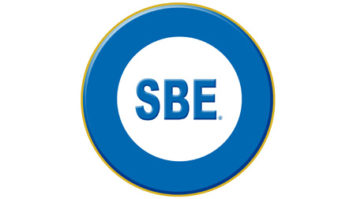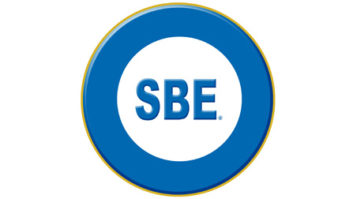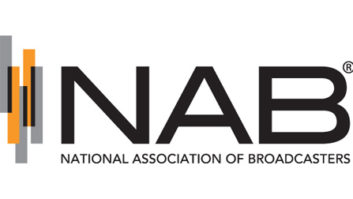(Statement from the SBE, updated Sept. 18 2008)
The reallocation of television channels 52-69 (698-806 MHz, commonly known as the “700 MHz band”) for public safety and commercial broadband use has resulted in a severe reduction in available spectrum for Part 74, Subpart H Low Power Auxiliary (LPA) operation. This in turn has created a scramble for spectrum on which licensed wireless microphones (WMs) and other LPA facilities can operate.
SBE is aware that manufacturers are producing and selling WMs that operate in the 944-952 MHz Aural Broadcast Auxiliary Services (BAS) band. This is permitted pursuant to Section 74.802 of the Commission’s rules, which permits broadcast licensees and broadcast networks to operate LPA devices including WMs in the 950 MHz Aural BAS band. However, it is only broadcast licensees and broadcast network entities that can use this band. Cable television operators, motion picture producers and television program producers are not eligible to use any BAS band for LPA operation except unoccupied television channels. Retailers and dealers of equipment have actively marketed these products to ineligible entities, and their marketing has been accompanied by misrepresentations and lack of candor regarding the obligations of users of the devices.
SBE advocates the interests of licensed users of BAS spectrum and provides volunteer BAS spectrum frequency coordination. The active marketing, sale, or leasing to ineligible or unlicensed persons, or the operation by those persons of LPA WMs is wrong and unlawful, and endangers reliable broadcast and BAS operation.
WMs are mobile, itinerant and utilize variable polarization. STLs and ICRs require high reliability which is threatened by any uncoordinated operation of LPAs at 944-952 MHz.
SBE-affiliated frequency coordinators should continue to work with all eligible entities that wish to obtain LPA licenses, or to operate licensed stations, in the 950 MHz Aural BAS band where possible without disruption of aural STLs and ICRs. However, SBE will provide assistance and serve as a resource to the FCC Enforcement Bureau in locating entities who illegally operate Part 74 wireless microphones without benefit of the required FCC license, especially where interference is caused.
Wireless microphones with powers of 100 to 250 mW (20 to 24 dBm) have field strengths far too high to operate as unlicensed, Part 15 devices; these are certified by FCC for use under Part 74, not Part 15. They must be operated only by a Part 74 licensee.
Those eligible for Part 74, Subpart H Low Power Auxiliary (LPA) licenses for wireless microphones are broadcast station licensees, broadcast network entities, cable television operators, motion picture producers or television program producers. The latter three groups can operate only on TV channel frequencies, however. The 26 MHz, 162 MHz, 450/455 MHz, and 944-952 MHz Aural BAS band frequencies can be licensed to and legally used only by broadcast licensees and networks. The rest must use unoccupied television broadcast channels exclusively for LPA operation.
All LPA licensees must coordinate their use of these frequencies in advance with local SBE coordinators. Coordinators will not coordinate LPA devices for eligible, licensed users on 944-952 MHz channels where there are existing fixed Studio-to-Transmitter (STL) or Inter-City Relay (ICR) links already using these frequencies in close geographic proximity, if interference will predictably result.
Contrary to false and misleading allegations by some vendors of wireless microphones, the 944-952 MHz Aural BAS band is heavily occupied in most areas of the United States. The band offers very little capacity for the operation of wireless microphones by eligible LPA licensees, and there are normally no options for unlicensed or ineligible licensees to use this spectrum at all.
SBE will actively monitor this situation and will continue to pursue equivalent replacement spectrum for that lost in the 698-806 MHz band due to relocation, in bands other than 944-952 MHz, to facilitate licensed LPA operation.










